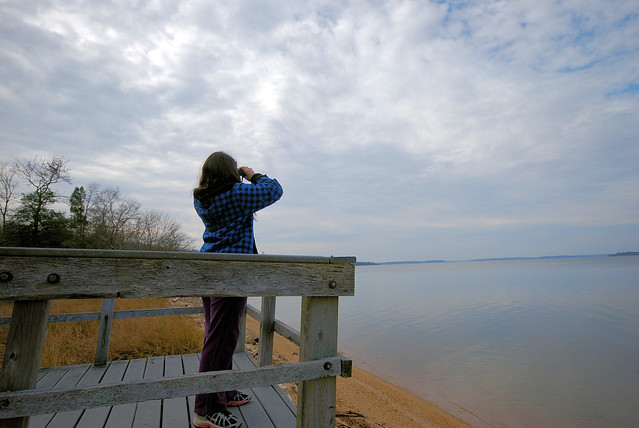Read Our Blogs
Mystery Snails
Posted December 29, 2012
ON A RECENT TRIP TO CALEDON STATE PARK ON VIRGINIA'S NORTHERN NECK I FOUND SOME OF THESE MYSTERY SNAILS, AMONGST OTHER THINGS.

Some of the more interesting debris I found along the beach at Caledon State Park
Chinese and Japanese Mystery Snails (Bellamya chinensis, B. japonica) get their common name because of the sudden appearance of their young.*
What’s so mysterious about mystery snails?
Mystery snails are the largest freshwater snails in the region (max 3 inches). They have spiral shells with a door (operculum) used to seal themselves inside. Unlike most freshwater snails, they give birth to live young. The sudden appearance of baby snails surprised aquarists, hence the name mystery snails.
The identification of these snails has been confused many times and there was debate about whether or not Japanese Mystery Snails (Bellamya japonica) and Chinese Mystery Snails (Bellamya chinensis) are actually the same species. A recent study shows that they are different species, but here they are lumped together.
Mystery snails are native to Asia where they are a common food item. In 1892 they were imported to Chinese markets in San Francisco and by 1911 had established around San Jose and San Francisco. Over time the snails moved from the Chinese food markets into the aquarium trade and were transported across the country for use in aquarium and ornamental ponds. They are now widespread in ponds, lakes, and reservoirs from California to British Columbia and Florida to Quebec.
The first reports of the snails in the Chesapeake region were in the 1960s when they were found in the Susquehanna and Potomac Rivers. They are now common in the Potomac and Susquehanna, but elsewhere in Chesapeake their abundance and distribution is unknown. Their shells are large and conspicuous, so let us know if you find them in a new river. Complete Record here.

Caledon State Park is located along the shores of the Potomac River

A 2 mile hike brings you to the beach where there is an Eagle viewing platform
Learn more about Caledon State Park here. Drive Time: Northern Virginia, 1 hour 45 minutes; Richmond, 1 hour, 30 minutes; Tidewater/Norfolk/Virginia Beach, 3 hours, 30 minutes; Roanoke, 6 hours, 30 minutes.
Caledon State Park is located at 11617 Caledon Rd., King George, VA 22485; Phone: (540) 663-3861; email, caledon. Learn more about park offerings by calling 1-800-933-PARK.
This beach along the Potomac River is a bit of a catch-all from the surrounding metropolis, if you plan to hike to the beach at Caledon, please bring a couple extra buckets or bags to collect some rubbish that has washed ashore there. Every little big helps!
Click here to learn about Caledon State Park's First Day Hike - Bring your camera and enter your favorite photo into the First Day Hike Photo Contest!
*Information provided by Marine Invasions.
PARKS
CATEGORIES
SHARE THIS PAGE
If you have read the article and have a question, please email nancy.heltman@dcr.virginia.gov.
Search for blogs
By Park
Categories
Cabins
Camping
Fishing
History and Culture
Other
Programs and Events
Trails
Volunteers
Water Fun
Archive
2025
2024
2023
2022
2021
2020
2019
2018
2017
2016
2015
2014
2012













